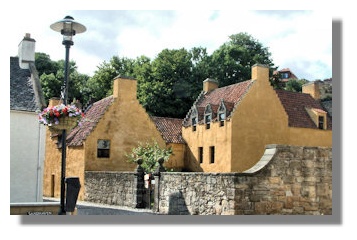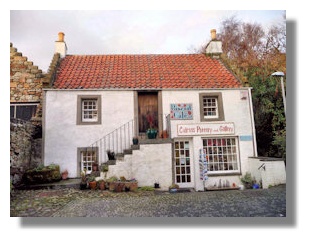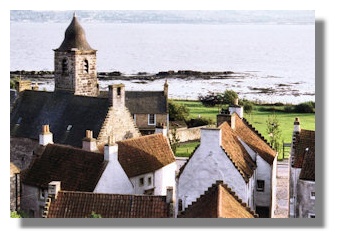Tam's Tales
- Culross, Fife
Culross - A Small Gem
The great thing about Culross is that it does not really look very Scottish at all. Many small towns in Scotland have a certain similarity. Their colours will be dominated by the local grey stone and their main streets will have a combination of churches, banks, filling stations and maybe a Scotmid store. There will possibly be a hotel where in days of yore, commercial travellers (remember them?) would rest their heads before the days of identikit budget hotel chains.
Culross is quite distinct and because of this it is a gem. The mustard colour of many of the buildings seems to owe more to Tuscany than to Fife. The thick wavy tiles of the roofs add to the slightly exotic continental feel.
The short film that the National Trust for Scotland shows visitors to the Culross Palace explains all. In the sixteenth century Culross was a busy town, with salt being extracted from seawater and coal being hewn from mines which extended far under the Firth of Forth. However, its trade took on a new dimension when George Bruce persuaded the king, James VI, to grant a royal charter to Culross in 1592. This permitted trade with other countries.
The international trade which followed has left its mark on Culross and the colour scheme and architecture of the town were influenced by contacts with the Low Countries (the area around the modern Netherlands) and the Baltic States.
A Small Palace

Culross Palace dates back to 1597 and was the home of George Bruce of Carnock. Is it a real palace? Well, maybe not. It is a homely place rather than a palatial one.Many of the timbered rooms have a feeling of a ship's cabin and with the strong nautical tradition of the place that is not surprising.
The National Trust has done a fantastic job of preserving this wonderful building and the guides are keen to explain the significance of various features of the house, such as its strong room and to place the building in the context of the time.
There is evidence that by the middle of the nineteenth century the building was home to a large number of families and was more of a squat than a palace. By the time the National Trust took over in 1930 the Palace was in a dire state.
There are more photos of the Palace and other points of interest in Culross in Windows media video Slide Show. If that link doesn't work for your browser, then go to the equivalent slide show on YouTube.
Local Hero
We will be returning to Culross to explore the Abbey, which was founded in 1217 and the rest of the town. Culross's charm is considerable and of course the connection with Admiral Cochrane adds to its romance.
Thomas Cochrane was the local boy who in true Boy's Own style, worked his way up to heroic status in fighting the dastardly French during the Napoleonic wars. Despite earning the nickname 'The Sea Wolf' for his maritime prowess, he was convicted for a stock market fraud in 1814. There is some evidence that Cochrane should have been cleared, but in 1817 he accepted an invitation to become head of the Chilean Navy where he brought in many reforms.
His legacy lives on thanks to the Hornblower character in C.S. Forester's books and more recently in Captain Jack Aubrey as in the book and film of 'Master and Commander.'
Biscuit Café

Our trip to Culross was much enhanced by a delicious lunch at the Biscuit Café which is at the back of the Culross Pottery and gallery, a few minutes' walk from the Palace. Wonderful home made soup and some of the best ham we have ever tasted. See www.culrosspottery.com for more.
Tam O'Ranter
December 2009Return to Tam O'Ranter Index




